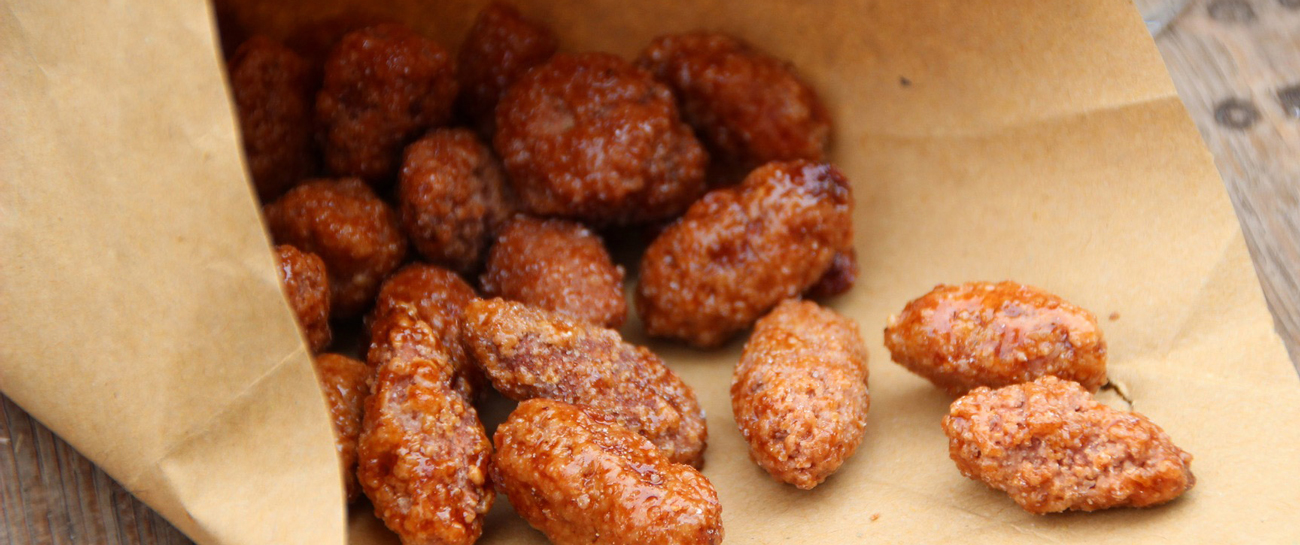

APPLICATION
Application of a caramelized sugar-coating onto nuts
A caramelized praline shows a dark brown glassy transparent aspect. It is a traditional marketplace process, sometimes brought to an industrial scale.
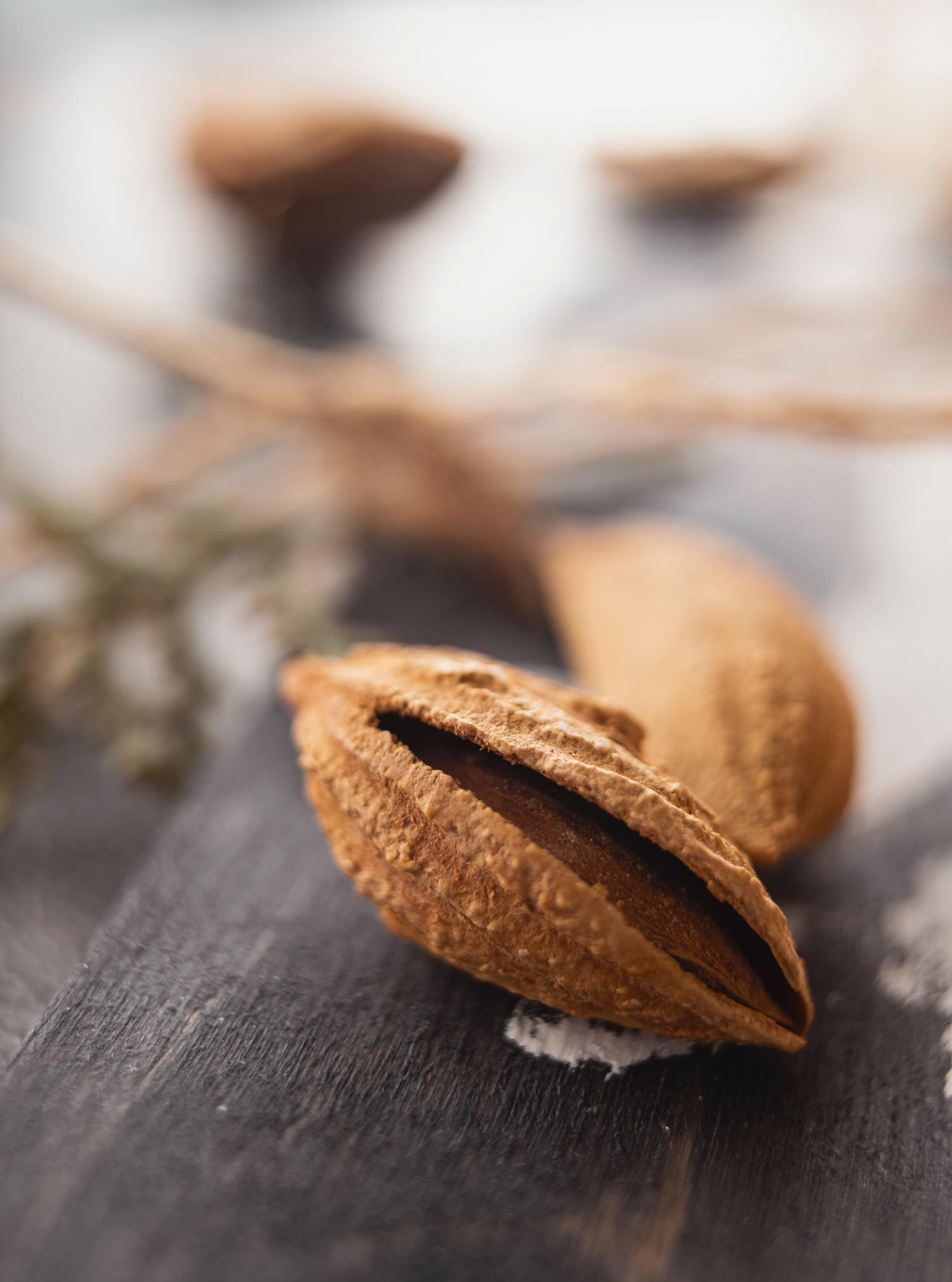

BASE
Core products
The core is a nut, generally a peanut or an almond.
RECIPE
Ingredients
The ingredient list used in the application is relatively short:
- Caster sugar
- Vegetable oil
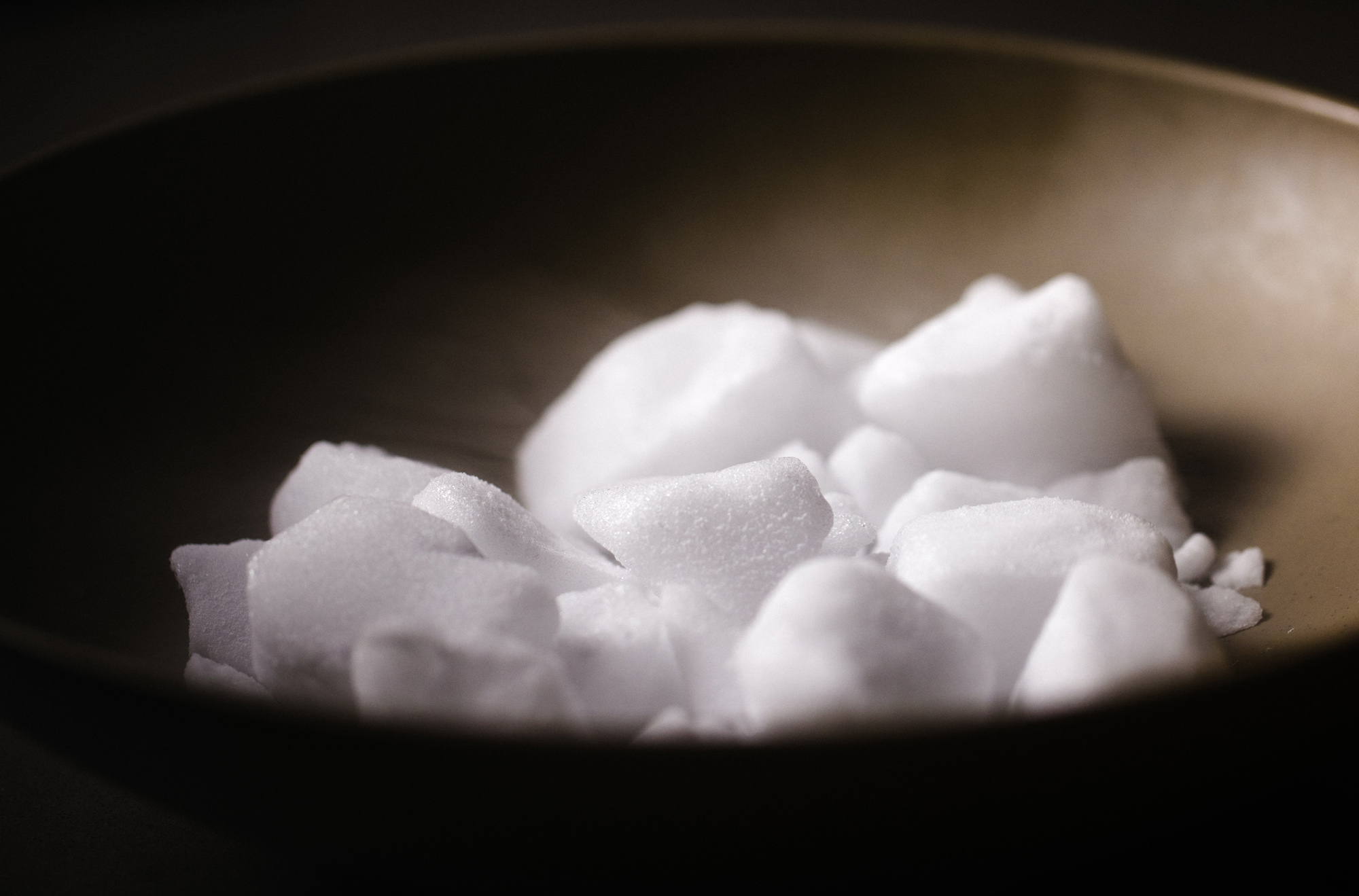





RECIPE
Ingredients
The ingredient list used in the application is relatively short:
- Caster sugar
- Vegetable oil
PROCESS
How does it work?
The ingredients do not need any preparation and are used readily. It is usually a batch operation, although a more significant production can be made on a continuous gas-fired rotating tumbler.
Step 1.
Pour the nuts into a gas-fired rotating pan.
Step 2.
Add a spoonful of oil to prevent accumulation.
Step 3.
Pour a ladle of caster sugar onto the nuts and disperse.
Step 4.
Carry on mixing and heating to melt the sugar.
Step 5.
Carry on until it turns into a darker colour.
PROCESS
Coating system
The coating occurs typically in a coating pan equipped with a source of intense heat, usually a gas burner. The sugar is measured and added manually. Other types of equipment can be used, such as a fixed heating pan fitted with a scraping blade on a rotary arm.
PROCESS
Coating system
Coating pan – traditionally made of copper, now replaced by stainless steel.
PRODUCT EVALUATION
How do you measure your success?
Key quality features
The process’s typical factor is the heating control to achieve the sugar’s browning without generating dark spots or fines.
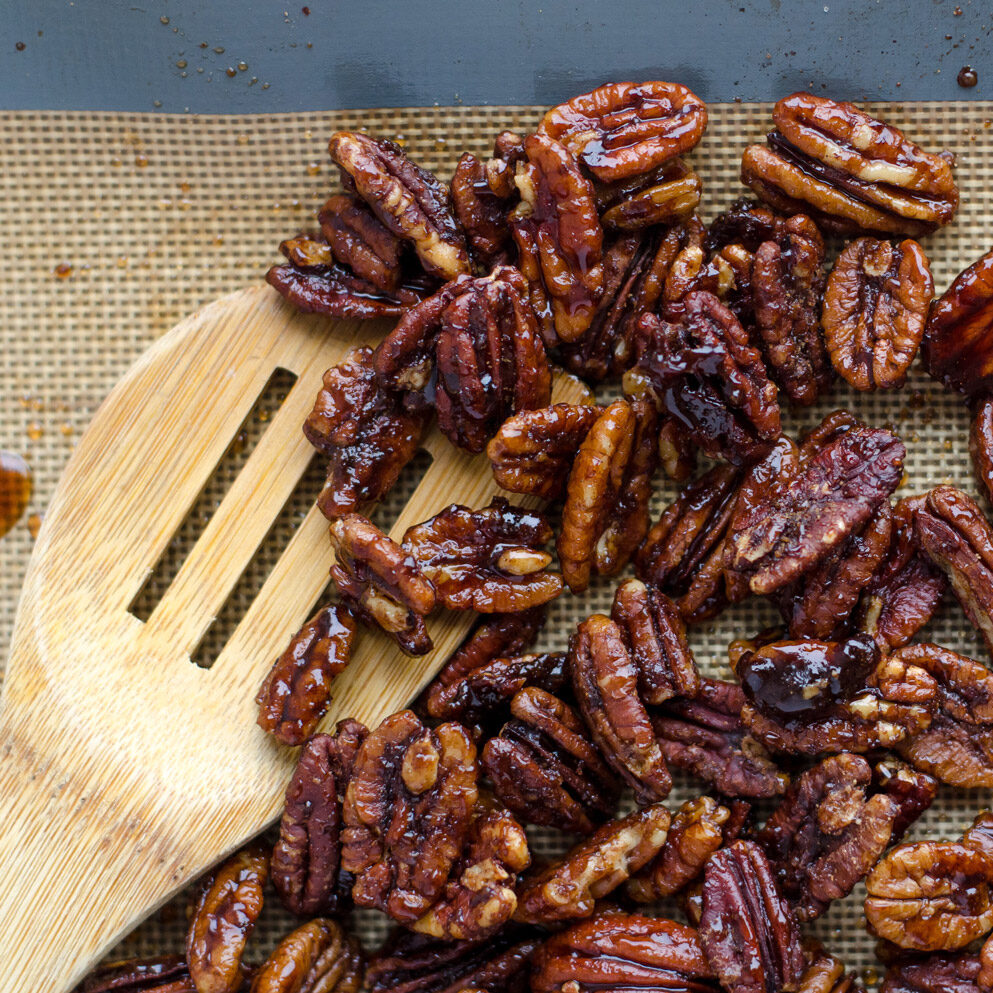

Core
Nuts or almonds should not peel, split or crack.
Sugar
Browning (Maillard reaction) without burning.
Product integrity
The product is brittle and must be handled gently.
Key quality parameters
The control focuses on cooking, but not only.
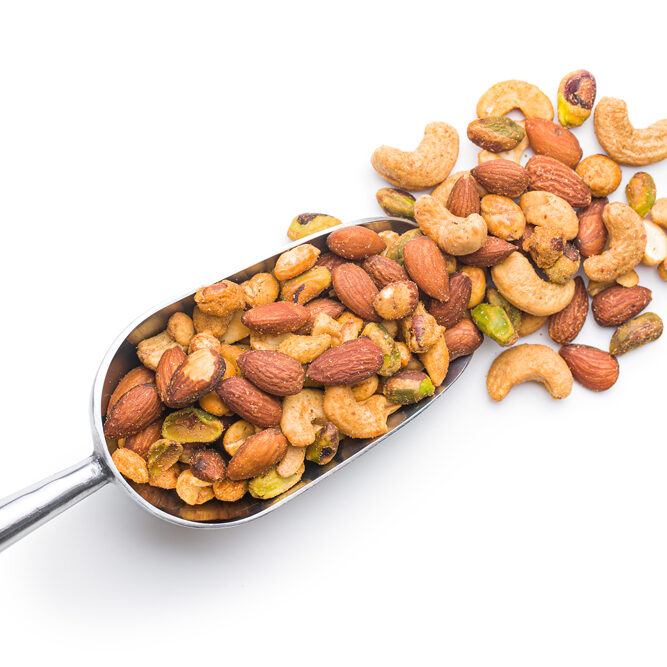

Core product
Standard nut’s size for an even coating.
Design
Scaling up the process should reproduce the handmade operations.
Operation
Control of the temperature over time.
APPLICATION
Discover more applications

